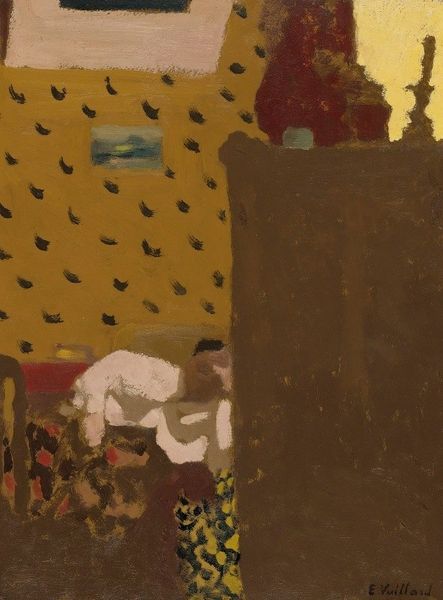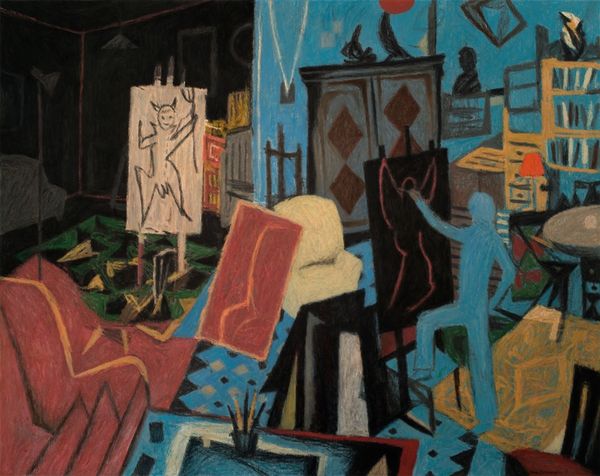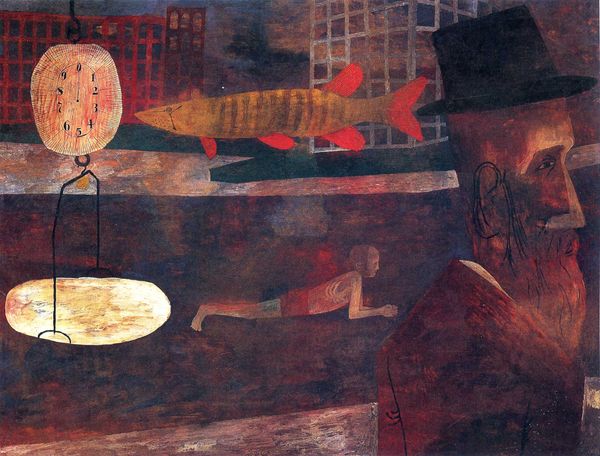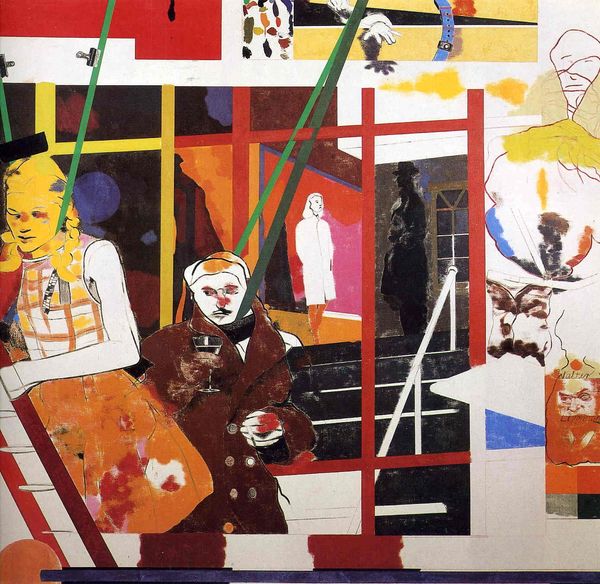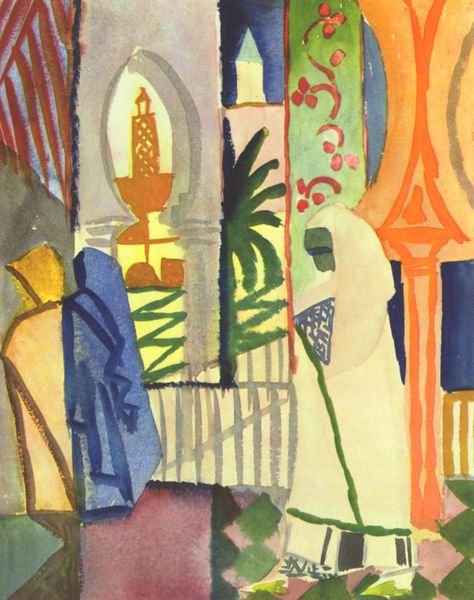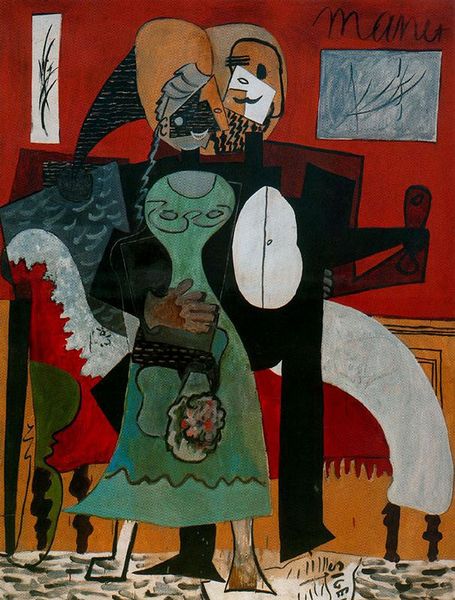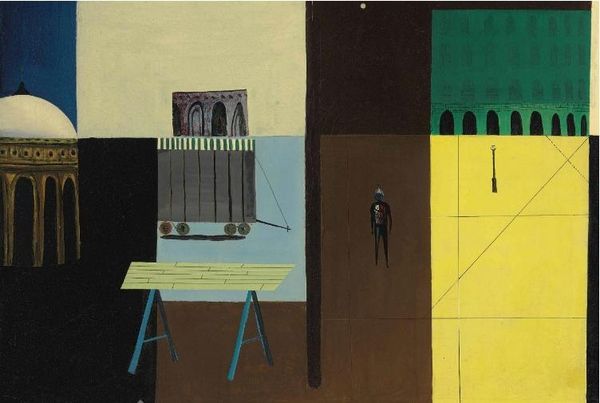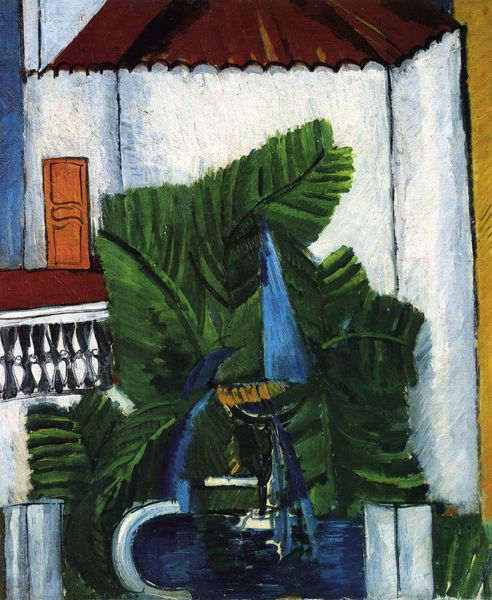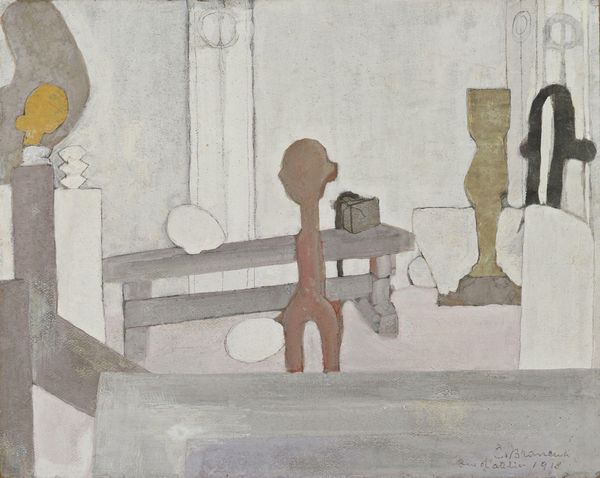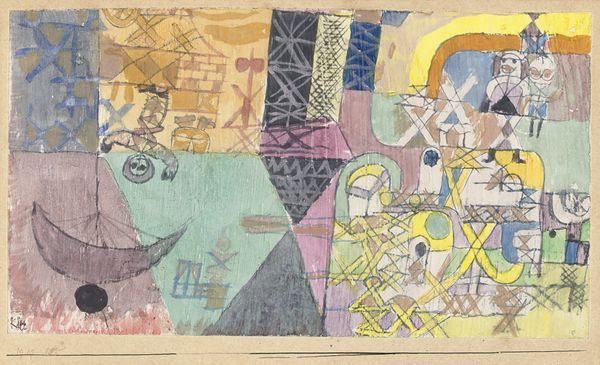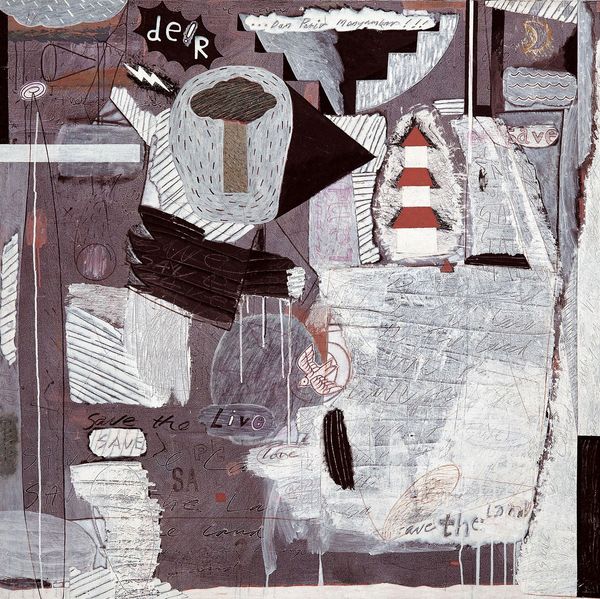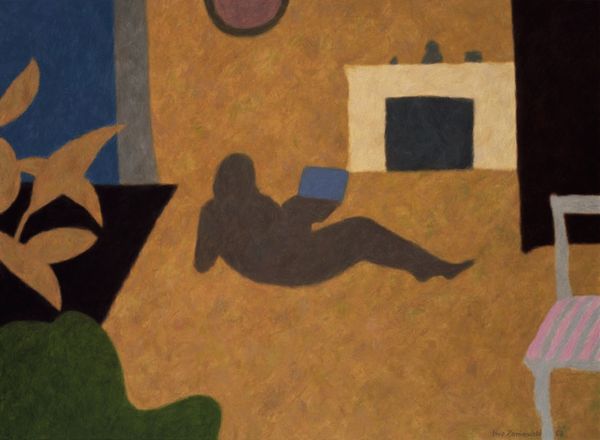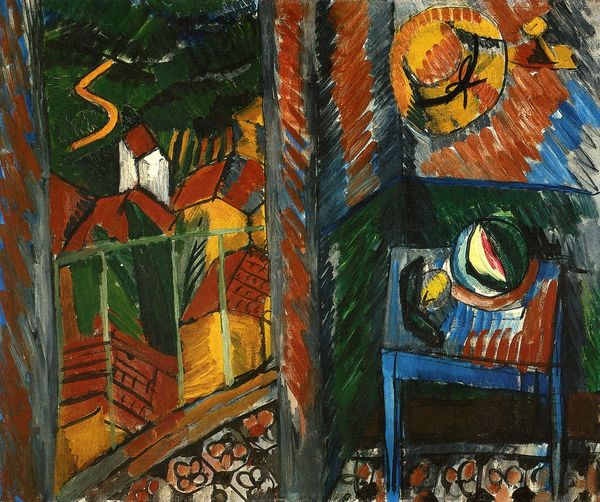
painting, oil-paint
#
cubism
#
painting
#
oil-paint
#
figuration
#
form
#
abstraction
#
line
#
history-painting
#
modernism
Dimensions: 245 x 213 cm
Copyright: Public domain US
Curator: Henri Matisse painted “The Piano Lesson” in 1916. It’s oil on canvas, and exemplifies his exploration of form during that period. Editor: Stark, almost austere, wouldn't you say? There’s a stillness, a sort of quiet melancholy about it that's immediately palpable, quite unlike his earlier exuberant pieces. Curator: Indeed. The painting depicts Matisse's son Pierre at the piano. But consider the symbolic weight here – the abstracted sculpture of a woman on the left. Do you recognize her? Editor: It seems to echo, however subtly, themes of societal constraint placed on women's autonomy during the period, that often made it a burden of many to stay at home while other things take place in a private and not accessible way to everyone, perhaps the boy at the piano in contrast. Curator: A valid reflection. It's an earlier bronze piece by Matisse himself called "Reclining Nude I". Its placement here seems deliberate. There's a strong contrast between its curves and the angular lines dominating the rest of the painting, a tension perhaps meant to emphasize domestic life. Editor: Domestic life painted as a prison almost. Note how Matisse renders Pierre—stiff, almost robotic, absorbed into his task. Then look at that cold, gray palette, quite muted, perhaps even mirroring the mood in Europe in 1916 during the height of the war. Curator: A plausible correlation, as many artists during that time reflected a state of society in their work, but there is the bright, intrusive, almost defiant patch of green outside. Its symbolism feels deliberate. Editor: An interruption of growth? Or an opportunity? Yes, it is curious the ways he lets nature, or the natural, in by way of sharp edges and straight lines, that really contrast, that being an act of society imposed and an natural urge? I think both the form and content feel charged, if somehow distant and removed from emotion, paradoxically of course. Curator: Precisely. "The Piano Lesson" is less about observation and more about invoking emotion. It showcases not only his family relationship but also societal tensions he, maybe unconciously or unconventionally was feeling too. Editor: Yes, what seems a straightforward domestic scene transforms into a complex commentary on society, familial expectations, and perhaps the looming darkness of history. An unexpectedly evocative, albeit still painting.
Comments
No comments
Be the first to comment and join the conversation on the ultimate creative platform.
